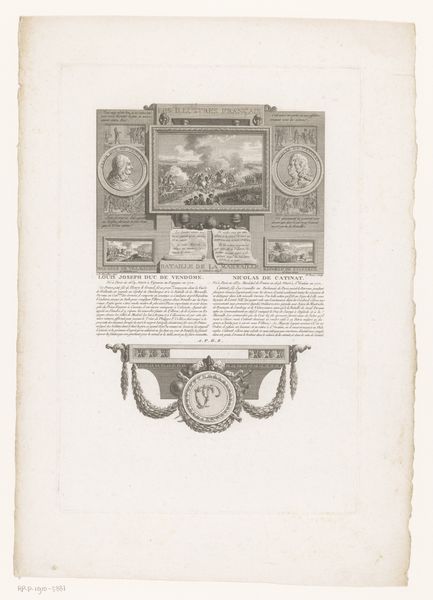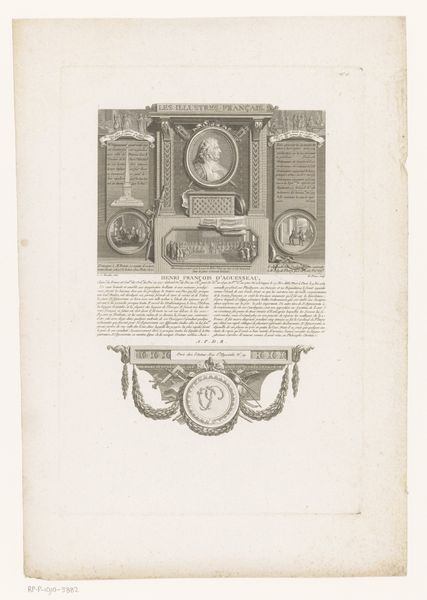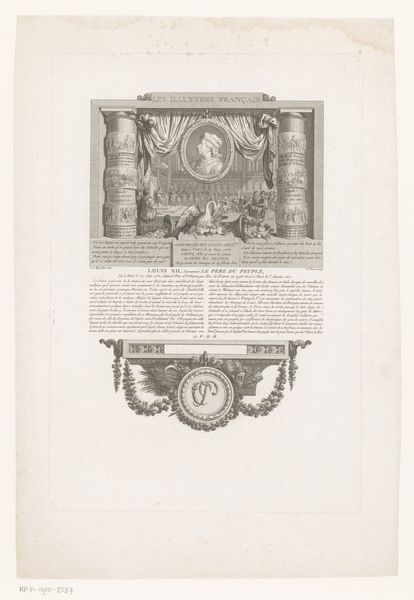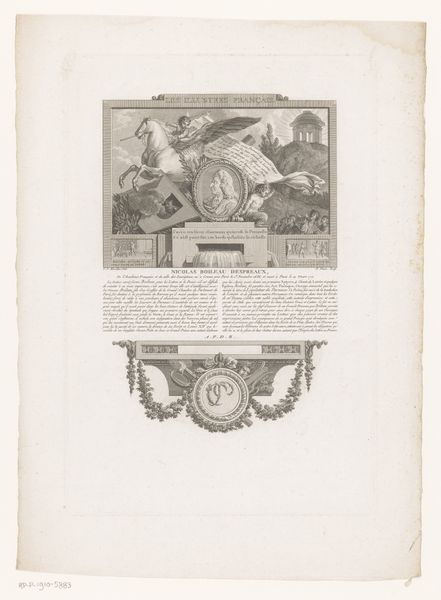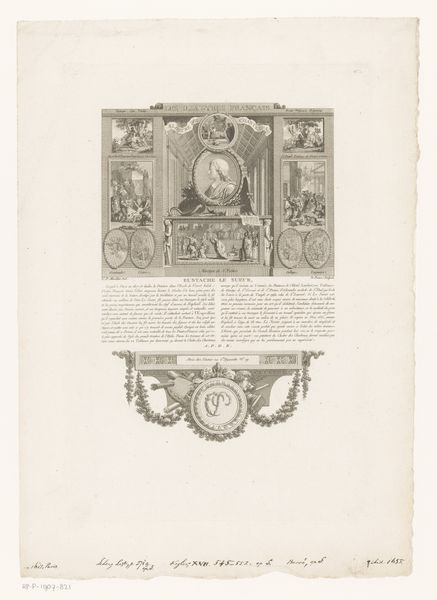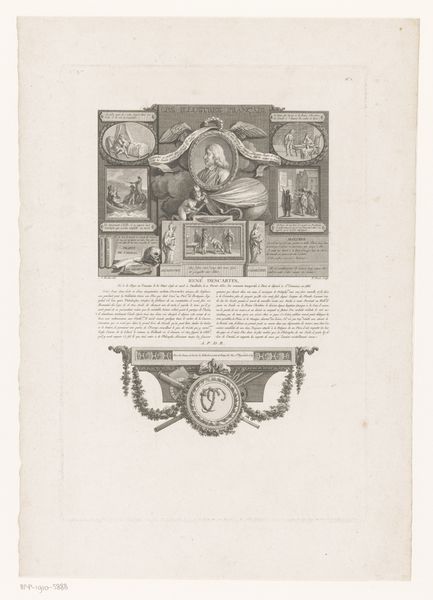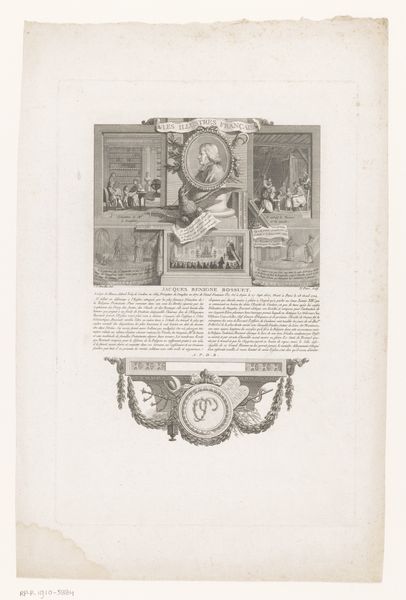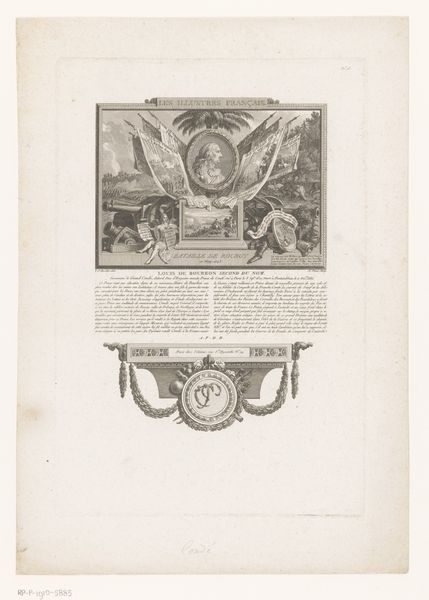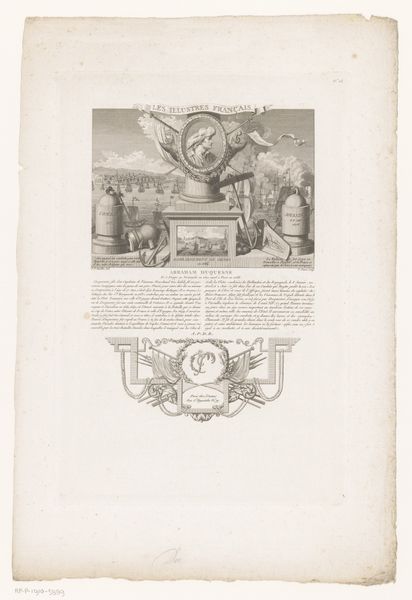
print, engraving
#
portrait
#
neoclacissism
#
allegory
# print
#
old engraving style
#
history-painting
#
engraving
Dimensions: height 337 mm, width 229 mm
Copyright: Rijks Museum: Open Domain
This is Nicolas Ponce’s allegorical portrait of Maximilien de Bethune, made without a specified date, and now held at the Rijksmuseum. It's an etching; a printmaking technique that was very popular during the Enlightenment. The portrait is an elaborate homage to Bethune, also known as the Duke of Sully, a prominent figure in French history. Maximilien was known for his role as King Henry IV's minister and for his contributions to finance and agriculture. Ponce’s portrait of Maximilien exists as part of a long tradition of powerful men commissioning art that reinforced their roles in society. Note the small vignettes surrounding the central portrait. They present key episodes of his life, and provide an almost theatrical narrative of Bethune's legacy. Consider how an artwork like this, created in a time of political and social change, uses the visual language of allegory to shape the perception of a public figure. How does it function as a carefully constructed piece of political communication?
Comments
No comments
Be the first to comment and join the conversation on the ultimate creative platform.

